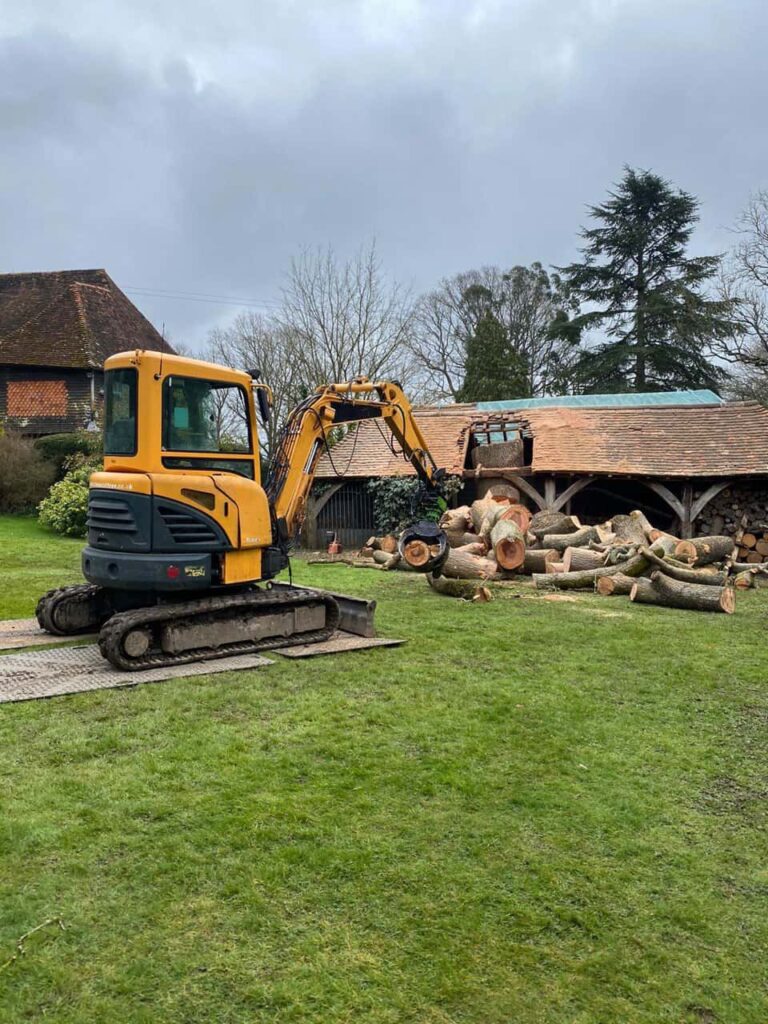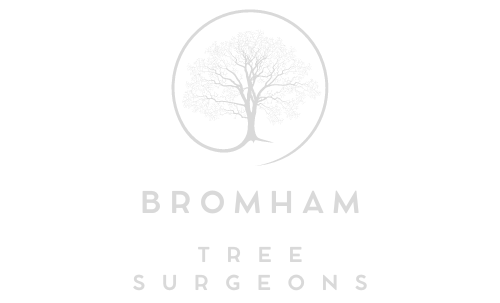Tree Crown Reduction: Tips for Working With Large Trees
Introduction: At Bromham Tree Surgeons, we know that tree crown reduction is an essential practice for maintaining the health, safety, and aesthetics of large trees. Some specific considerations and techniques ensure effective and safe pruning when working with these majestic giants. In this blog post, we will share expert tips for performing tree crown reduction on large trees, helping you to achieve the best outcomes for your landscape.
Understanding Tree Crown Reduction
Tree crown reduction involves carefully removing branches and foliage from the upper part of a tree. This process aims to reduce the tree’s overall size, improve its structure, and enhance light and air penetration. Due to their size and complexity, large trees require a more strategic approach to crown reduction to ensure their health and safety.
Tips for Working With Large Trees
1. Conduct a Thorough Assessment
Thoroughly assessing the tree is crucial before beginning any crown reduction work. Look for signs of disease, pest infestation, and structural weaknesses. An experienced arborist from Bromham Tree Surgeons can evaluate the tree’s health and determine the best approach for crown reduction.
2. Use the Right Equipment
Working with large trees requires specialised equipment to ensure safety and efficiency. Essential tools include:
- Pruning Saws and Shears: High-quality, sharp tools are necessary for clean cuts.
- Chainsaws: A chainsaw may be required for larger branches. Ensure it is well-maintained and operated by a trained professional.
- Ropes and Harnesses: Climbing large trees safely requires appropriate ropes and harnesses. Always use equipment that is rated for tree work.
- Cherry Pickers or Bucket Trucks: A cherry picker or bucket truck can provide safe access to high branches for very large trees.
3. Follow the 3-Point Cutting Technique
The 3-point cutting technique is essential for preventing damage to the tree and ensuring safety:
- Undercut: Make a small cut on the underside of the branch, a few inches away from the trunk. This prevents the bark from tearing.
- Top Cut: Make a second cut on the branch’s top, a few inches further from the undercut. This will allow the branch to fall cleanly.
- Final Cut: Remove the remaining stub just outside the branch collar. This will encourage proper healing and reduce the risk of disease.
4. Avoid Over-Pruning
While removing a significant amount of foliage to achieve a desired shape or size may be tempting, over-pruning can harm the tree’s health. As a rule, never remove more than 25% of the tree’s crown in a single pruning session. This helps the tree to maintain sufficient leaf area for photosynthesis and reduces stress.
5. Consider the Tree’s Natural Shape
When performing crown reduction, it’s important to consider the tree’s natural shape and growth pattern. Aim to maintain the tree’s overall form and symmetry. This not only enhances the tree’s appearance but also ensures structural stability.
6. Prioritise Safety
Safety should always be the top priority when working with large trees. Ensure all equipment is in good condition and proper safety protocols are followed. This includes wearing appropriate personal protective equipment (PPE) such as helmets, gloves, and eye protection. Hiring a professional arborist is best if you’re not experienced with tree work.
7. Schedule Regular Maintenance
Large trees benefit from regular maintenance to keep them healthy and safe. Incorporate crown reduction into your tree care routine, but also consider other practices such as deadwood removal, pest management, and soil health improvement. Regular assessments by a professional arborist can help identify issues early and ensure timely intervention.
Benefits of Crown Reduction for Large Trees
Incorporating tree crown reduction into the care of large trees offers several benefits:
- Improved Health: By removing diseased or damaged branches, you can prevent the spread of pests and diseases, promoting overall tree health.
- Enhanced Safety: Reducing the size of the crown can minimise the risk of branch breakage, potential damage to property, and injury to people.
- Better Light and Air Penetration: Thinning the crown allows more sunlight and air to reach the inner branches and the ground below, supporting healthier growth.
- Aesthetic Appeal: Well-pruned trees contribute to a more attractive landscape, adding value to your property.
Conclusion: Tree crown reduction is a vital practice for maintaining the health and safety of large trees. By following these expert tips and working with a professional arborist, you can ensure that your large trees remain healthy, safe, and beautiful.
Call us on: 01234 860 699
Click here to find out more about Bromham Tree Surgeons
Click here to complete our contact form and see how we can help you with your tree’s needs.

